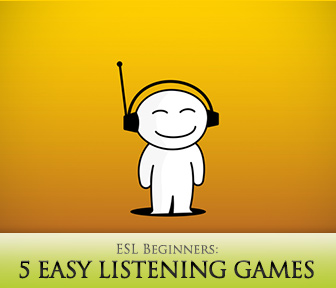Give a Quick Listen: Six Quick Activities to Fill 5 Minutes in Listening Class


And not just listening to the correct pronunciation, intonation and stress. I mean really listening. Listening for meaning. Listening for context. Listening for real comprehension.
You may think there isn’t a whole lot beginners can comprehend, but you’ll be surprised. Try playing these simple listening games. They may be easy, but for students who are just starting out in their English learning journey, they can be highly effective ways to train in the basic skills they will use on a daily basis in the near future!

One of the most essential listening skills your students should develop involves listening for key information, which often includes numbers, facts, hours, dates or other essential info. To help them train for this skill, first give them some context: You will listen to a man asking for information at the train station. Then, before they listen, give them something they will have to find out: What time does the train to Boston leave? Now here comes the “game” aspect of it. You can:
This easy listening game works great with young learners. Arrange chairs as if to play musical chairs. Students will walk around them, but in this case they won’t be listening to a song. They will listen to a conversation. As always, give them the context and ask them a question: What is Tom’s favorite food? Students walk around the chairs as you play the audio and the student/s who hear the answer to the question sit/s down. Pause the audio. Those who are seated answer the question, and if it’s correct they will remain seated. If several students sit down at the same time, that’s fine, but ask them to whisper the answer in your ear to make sure they all heard the answer from the audio.
Ask another question (whose answer will come up next in the audio). The students who were left standing now walk around the chairs till they hear the answer. Go on asking questions and giving students the opportunity to secure a seat. The last student left standing, like the usual game of musical chairs is left out of the next round. A chair is removed from the circle and so it continues until you have one chair and two students competing to answer the final question.
It’s convenient to have the script of the audio so it’s easier for you to ask the questions. Also, bear in mind you will play longer with a longer audio, but you can also play with several short ones. The game will go much faster if several students sit down (have the answer) at the same time, but only those who got it right should remain seated.
Something that is particularly difficult for ESL students is listening to the subtle differences between words that have a different, but similar spelling. These are words like leave/live, fill/feel, tree/three, fit/feet, etc… So here’s a great game you can play. Have a set of cards printed out with these troublesome words. Divide the class into two teams. Students take turns. You place the two cards on the desk in front of them: live and leave. Say one of the words out loud: live. If the student chooses the right card, the team gets 2 points. Now, if the student is unsure, he/she may choose to request “an example”, i.e. the word used in a sentence: I live a few blocks from here. If the student chooses the right card in this case, the team gets 1 point.
Here’s another game you can play with the same easily confused words from above. Divide students into two teams. Whisper a word to a student, who must then whisper it to the student next to him/her, and so it goes until the last student in line hast to say the word out loud. If he/she pronounces it correctly, the team gets a point.
A variation of this would be not to whisper to the first student but show him/her the word written down on a piece of paper.
Another important listening skill students must develop is learning to understand step by step instructions. Try this fun listening game, which also helps them practice asking for and giving directions. You’ll need a “city map”; you can use a real map, or better yet create one with your students’ desks, so they have actual “streets” to walk on. Start at any give point, say the “bank”, and have a students ask for directions to another location. Tell them how to get there. The student must trace his/her finger along the route you indicated, or walk all the way there. Students who manage to reach their destination/don’t get lost win points!
Have any other games to add to the bunch? Please share them below!